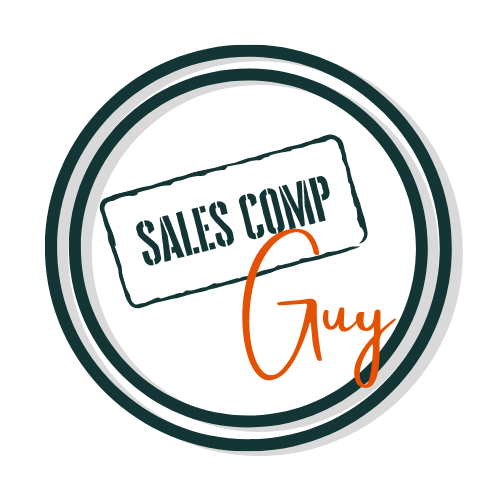Sales Goals Planning for 2025: Top 5 Things to Focus On
Key Strategies to Align Your Sales Team for Success Next Year

It's that time of year. Time to start reflecting on what's been working and what hasn't, and it's time to set up your plans and goals for next year. Some reflection should help identify some areas that require focus and attention. As you prepare to adapt your plans to the coming year, I wanted to offer a few areas for focus and considerations to think about.
Staffing: Hiring or Not Hiring?
One of the first things I talk about in my book is whether hiring is the answer to your organization's needs. There are so many things to consider before jumping into a new hire, including:
- Can your existing budget and compensation program support a new hire?
- Can you accomplish your goals in another way besides hiring, such as by reorganizing or promoting from within?
- Have you evaluated your current team for issues such as job scope creep, poor opportunity definitions, or coverage misalignments that could be corrected to improve your team's productivity and success?
There's nothing wrong with deciding that it's time to hire and expand the team, but if you can accomplish the same goals (or growth goals) without hiring, it can be far less disruptive. Remember that new hires will need to overcome the cultural dynamics and generally have a reasonably long ramp-up phase. Even if the math works, don't model for immediate impact
Performance Management: Driving Consistent Results
Are your performance management strategies driving the results you're looking for? Is your sales compensation plan effectively aligned with strategy to create great results? These are some of those crucial considerations before shifting attention to changes for next year. Now's the perfect time to evaluate the effectiveness of your:
- Performance review processes and cadence
- Process for collecting and responding to feedback
- Target expectation setting and communication/roll-out
- Performance reporting and coaching
In sales, pipeline appraisals, forecast/opportunity calls, business reviews, relationship maps, account plans, and a variety of other work products are evidence of performance. Be sure to spend the time establishing clarity and transparency regarding expectations for performance gains going into the new year.
Cost of Compensation: Balancing Rewards and Responsibility
Your compensation plan is more than just a rewards system to get salespeople to sell. In fact, there are a number of reasons why we do sales compensation, many of them psychological in nature.
The components of a good compensation plan work together to move your organization toward its goals by rewarding the sales team through incentives that align with their personal and professional goals. If successful, it can becomes a sort of circle of life for your sales team, and because there are many touchpoints on that circle, it's essential to evaluate them all for potential problems and opportunities. We want to make sure that we connect the positive actions and business outcomes with the financial rewards to positively reinforce that cycle of input and output.
Check out my book,
Starting Simple: Sales Compensation, as a guide to evaluating the effectiveness of your sales comp plan.
Technology: Leveraging Tools for Efficiency and Growth
Now's also a great time to take a look at the technology you're using, such as CRMs or SPMs. Ask yourself whether your existing technology is helping your team perform better and whether you want to continue using it. Or if you decide it isn't helping the way you want, maybe it's time to look elsewhere.
And if your organization is still operating off of spreadsheets and sticky notes, you're certainly not alone. It is a decision to invest money and time in comparison to the expected gains in productivity and visibility. But it might be a good time to decide if it's
time to make the move to an SPM. It is always important to remember that process comes before technology. If you don't have good processes, the technology won't do much other than automate poor processes.
Market Conditions and Customer Needs: Adapting for the New Year
As we approach 2025 (or any other new year), understanding and adapting to market conditions and evolving customer needs will be crucial for achieving sales success. External factors such as economic trends, industry-specific market shifts, and fluctuating consumer behavior will significantly impact sales strategies. What's changed for your sales territories and teams? Has the opportunity shifted to different locations? Has competition gotten stiffer in certain areas?
To remain competitive, it's vital to evaluate and adapt to these sorts of changes. By aligning your sales strategy with both market dynamics and customer priorities, you ensure that your sales team is not just reactive but also strategically positioned to capitalize on emerging opportunities.
You always want to keep the evolving needs of your prospects and customers at the center of decision-making regarding your organization's go-to-market strategy. Without that alignment, you will not remain successful for long.
Conclusion
As you think about your organizational and sales goals for the new year, carefully consider staffing decisions, refining performance management strategies, balancing compensation costs, leveraging the right technology, and staying attuned to market conditions. In doing these things, you'll position your sales team for victory in the year ahead.
Remember that it all starts with finalizing and clarifying strategy, followed by modifications to the varying aspects of execution as laid out above. Ultimately, thoughtful planning now will help ensure your organization is ready to adapt and thrive in an ever-evolving landscape.












